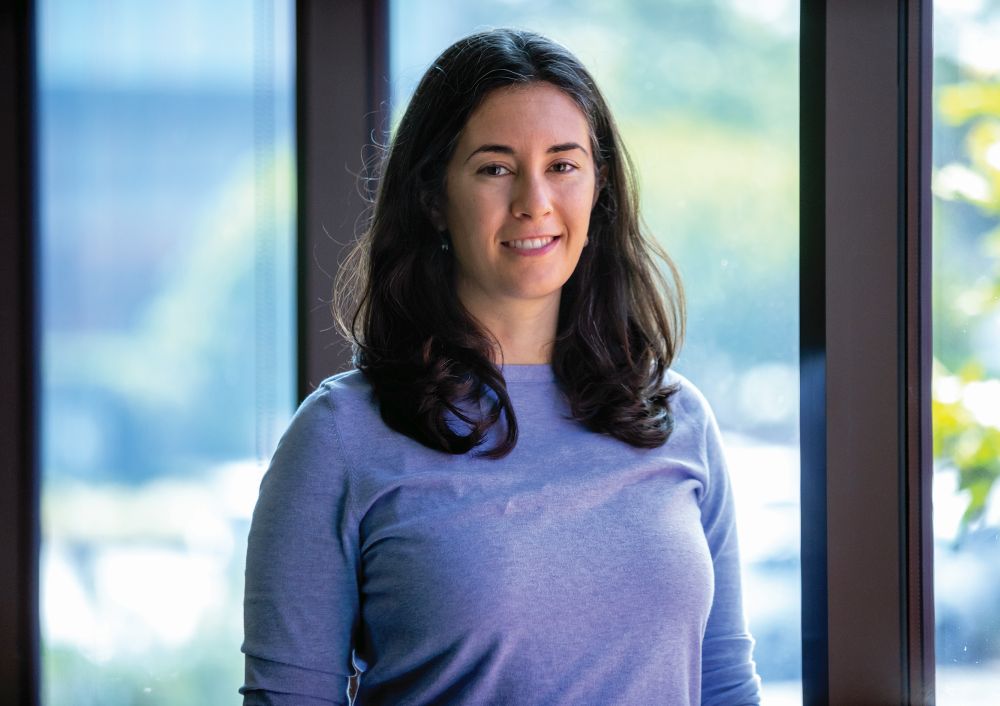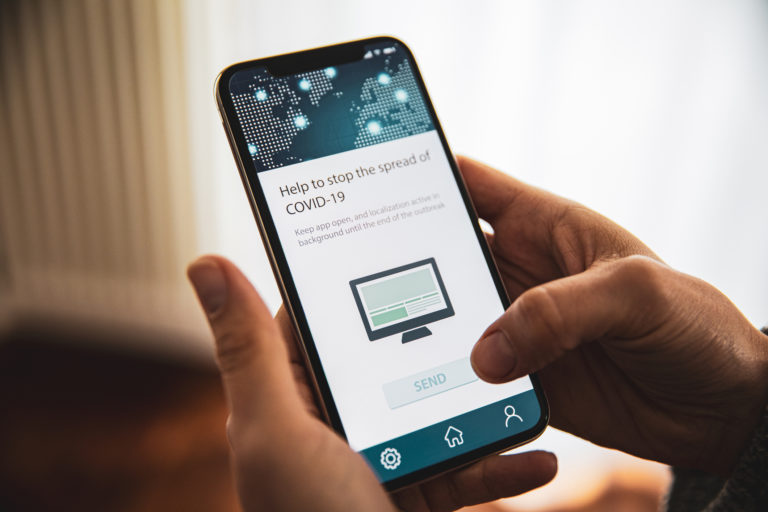In March 2020, before COVID-19 laid claim to the United States, Vice President Mike Pence briefed the press about the coronavirus outbreak, which at the time was a threat to passengers aboard the Grand Princess cruise ship moored off the coast of California [1]. At the time, cases had spiked in Iran, Italy, and Spain, but the disease was still an abstraction to most Americans. When asked about a potential outbreak in Washington, D.C., Pence called on Dr. Anthony Fauci, director of the National Institute of Allergy and Infectious Disease, and a member of the U.S. Task Force, to address the question. Fauci replied that any individual who tested positive for the disease would undergo contact tracing, which he deemed “the public health weapon” for catching outbreaks before they start. Not long after, the World Health Organization declared a global pandemic, and the virus began spreading across the country.
Contact tracing is a form of epidemiological forensics widely considered the gold standard for tackling epidemics. It’s a process that involves laboriously tracing an infected persons footsteps one individual at a time, and following up with anyone with whom they may have crossed paths. Today, in the throes of the pandemic across the U.S., many states are allocating millions of dollars to hiring contact tracers. Massachusetts recently allocated US$44 million to hire 1000, New York State announced it will hire 17,000, and California plans to hire as many as 20,000. But hiring and training requires time, something in short supply as thousands of human lives are daily lost to the disease, and social distancing restrictions are bleeding out the economy. An estimated 200,000 new contact tracers need to be hired to conduct interviews and do follow-up in order to meet the current demand in the United States alone [2]. Combating a global pandemic this way is like trying to put out a five-alarm fire with a garden hose, but worse. The disease simply moves too fast. We need to speed up the process…and fast.
Digital contact tracing could be the answer. It utilizes existing technology in smartphones, to both notify individuals if they have been exposed to the virus, and to track viral hotspots through apps. Location data from infected individuals can quickly be uploaded and shared with app users, instantaneously notifying them if they’ve been exposed, and how to get help. It’s a blip in time compared to the hours manual contact tracing requires. It’s also cheaper and more accurate [2]. Such apps have already been deployed in numerous places, including Singapore, Australia, the United Kingdom, and China. South Korea and Taiwan claim that their apps, combined with other efforts, have markedly slowed the spread of the virus [2]. As multiple apps are in development around the world, the race is on to birth the ultimate digital tools to contain our global scourge.
Digital contact tracing apps
Digital contact tracers primarily utilize two technologies built into smartphones: Global Positioning System (GPS) and Bluetooth. GPS can generate location maps with a user’s time-stamped path. Healthy Together, a contact tracing app deployed in Utah, uses GPS. If a patient is diagnosed with COVID-19, a health care worker guides them to download the app, which then requests permission to share their location data from the prior 14 days, the period of time they may have been contagious. That data is compiled on a database that alerts other users if they crossed paths, without identifying the sick individual. “It is designed to facilitate the work of Utah’s public health workers, not replace them, especially in areas where human interaction and compassion is vital,” said Jared Allgood, co-founder and chief strategy officer of Twenty, the company charged with making the app (Figure 1). It also includes symptom tracking, resources for nearby COVID-19 testing sites, and an option to opt-in to receive COVID-19 test results. However, the technology can be inexact [2]. For example, individuals in the same high rise, but on different floors, would register in the same location. And if there’s no WiFi or cell signal, like on a train, it doesn’t work at all.

Bluetooth can be more accurate with data about close contact. It utilizes short-range radio technology that works by emitting and receiving signals known as “chirps” from nearby devices. The app Covid Watch, developed by Safe Paths, a Massachusetts Institute of Technology think-tank, uploads the chirps from phones of COVID-positive individuals to an online database. Every day, the phones of other app users automatically scan a database of chirps, and if a match is detected, they are notified of potential exposure and advised on next steps.
A big hurdle with both methods is that it can only reach those people who have downloaded the apps. In early April, Google and Apple put out a joint press-release announcing a partnership to develop and release application programming interfaces (APIs) and operating system-level technology for health agencies to allow Bluetooth notifications without downloading an app, simplifying the development of their contact tracing apps [3]. But the apps that utilize the APIs must have a decentralized model for data storage, mandating that data only be stored on individual phones, not on a larger database. “Privacy, transparency, and consent are of utmost importance in this effort, and we look forward to building this functionality in consultation with interested stakeholders,” Google and Apple said in their joint press release [3].

Later, on June 1, The Exposure Notification Privacy Act was introduced in the U.S. Senate, which recommends measures largely built into the Google Apple API model, including a mandate that developers must work in coordination with public health authorities, that use of apps be voluntary, and all data collected be blocked from commercial use [4]. These efforts alleviate some privacy concerns, but it also means Bluetooth and GPS can’t be used in the same app. And without location data, health officials can’t identify viral hotspots, said Chris Kries (Figure 2), an organizational strategist for Safe Paths, but he also acknowledged the legitimacy of privacy concerns. To most Americans, location tracking by a government entity is unpalatable, and understandably so. China’s system, for instance, records data revealing user identity, location, and purchase history to monitor adherence to quarantine rules [5]. “I think Google and Apple just don’t want to be involved entirely because they don’t want to deal with the privacy issues,” said Kries, which are fraught with potential legal risks, especially with the passage of the new Senate bill.

Symptom tracking
Other public health officials are taking a different tack with digital tools, developing apps that track symptoms as opposed to exposure. This is useful because not all of those infected show up at the hospital, and some never experience symptoms at all. Andy Chan (Figure 3), an epidemiologist at the Harvard Chan School of Public Health, and collaborators at King’s College London worked with the health science app company Zoe, to make Covid Symptom Tracker, an app that crowdsources symptom information from both healthy and sick users, and tracks outbreaks using their zip codes. Users are asked to report symptoms every day in order to understand the early, telltale signs of the disease. They also wanted to see if they could use that information to ultimately not just track, but predict outbreaks, which could inform recommendations about lifting restrictions on social distancing. As it turns out, it can.
Earlier this May, the team published a study in Nature Medicine [6] using symptom data from 2.5 million app users in the United States, the United Kingdom, and Sweden, showing that the loss of taste and smell, an odd symptom distinguishing this coronavirus from the flu, was the number one early indicator of an infection. It was so accurate, in fact, that a mathematical model they developed predicted with 80% accuracy that the symptom would result in COVID-19. “By using symptom surveillance, we were able to predict with a significant amount of lead time where there could be a spike in cases,” he said. A spike in symptoms most often led to an uptick in cases five days later. “And for that critical amount of time to plan,” he said, “we’re hopeful that our app could be used as a tool,” to determine whether or not to tighten social distancing guidelines.

Another symptom tracking app, DETECT, relies on health tracking devices to identify possible infection by heartbeat. The idea was born from a Lancet study [7] that monitored the resting heartbeats of over 47,000 Fitbit users, and found that elevated rates could accurately predict an oncoming flu infection days before the onset of other well-known symptoms, like fever and cough. This suggested the possibility of using resting heartbeat data for early detection of regional outbreaks. Jennifer Radin (Figure 4), an epidemiologist with the Digital Medicine Division at Scripps Research Translational Institute, and lead author, published the study in January, just before major outbreaks began in the USA “When coronavirus came, that kind of inspired us to get this prospective study off the ground really quickly,” she said. Partnering with the health care technology company CareEvolution, they developed DETECT to pair wearable data like resting heart rate, activity, and sleep with survey questions about flu-like symptoms. Users can also link their electronic health records, if they choose. By mid-May, the app already had 16,000 users, but “we’re really hoping to grow it to hundreds of thousands if not millions to see if we can identify viral illness using your wearable data,” said Radin. “It will hopefully help inform coronavirus outbreaks and identify them at a more local level and in real time.” And as wearables improve, additional sensors will be incorporated into the devices, measuring things like blood pressure, EKGs, and perhaps even cough recognition. This will only further enhance the data, she said.
Technological challenges
The trouble is, all of these proposed digital solutions are flawed, some fundamentally so. GPS tracking, which records location data on a shared database, is fraught with privacy concerns. And that could lead to legal challenges both in the U.S. and abroad. The technology is also imperfect. Bluetooth becomes less reliable with distance, or in a handbag or pocket [8], which could result in false alarms. Plus, it also only registers contact when it pairs with another signal for several minutes, so someone sneezing as they pass you on the street might not register on your phone at all. And perhaps most importantly, what if people don’t use it? For apps that rely on heavy usage to be effective, that’s a major problem. Some countries like China have mandated extreme digital tracking, which has proven very effective. But that kind of surveillance isn’t likely to occur in the U.S. for many reasons. And what about people without smartphones, or individuals uncomfortable with digital technology, the majority of which are over 65, the most vulnerable age group to the virus? They might never use the apps at all.
In the end, a single app, or wearable, isn’t going to be what saves us. Contact tracing apps and symptom trackers may help us contain the infection, said Chan, but in the end, they need to be supported by a solid foundation of expanded testing, a well-equipped health care system prepared to handle an outbreak, and ultimately, a vaccine [2]. “My hope, in some sense, is that a vaccine comes along tomorrow, and this becomes a nonissue,” said Kries, “if we could work on something else that would be the ultimate dream come true.”
References
- “Press briefing by Vice President Pence and members of the White House Coronavirus Task Force,” United States, Office of the Press Secretary, Accessed: May 24, 2020. [Online.] Available: Whitehouse.gov
- V. Hart et al., “Outpacing the virus: Digital response to containing the spread of COVID-19 while mitigating privacy risks,” Edmond J. Safra Center for Ethics, White Paper 5, 2020.
- Apple, Inc., “Apple and Google partner on COVID-19 contact tracing technology,” press release, Apr. 10, 2020. [Online]. Available: https://www.apple.com/newsroom/2020/04/apple-and-google-partner-on-covid-19-contact-tracing-technology/
- B. Johnson, “The US’s draft law on contact tracing apps is a step behind Apple and Google,” MIT Technol. Rev., Jun. 2, 2000. [Online]. Available: https://www.technologyreview.com/2020/06/02/1002491/us-covid-19-contact-tracing-privacy-law-apple-google/
- P. H. O’Neill, T. Ryan-Mosley, and B. Johnson, “A flood of coronavirus apps are tracking us. Now it’s time to keep track of them,” MIT Technol. Rev., May 7, 2020. [Online]. Available: https://www.technologyreview.com/2020/05/07/1000961/launching-mittr-covid-tracing-tracker/
- C. Menni et al., “Real-time tracking of self-reported symptoms to predict potential COVID-19,” Nature Med., vol. 26, pp. 1037–1040, 2020, doi: 10.1038/s41591-020-0916-2.
- J. M. Radin et al., “Harnessing wearable device data to improve state-level real-time surveillance of influenza-like illness in the USA: A population-based study,” Lancet Digit. Health, vol. 2, no. 2, pp. e85–e93, 2000.
- D. J. Leith and S. Farrell, “Coronavirus contact tracing: Evaluating the potential of using bluetooth received signal strength for proximity detection,” Trinity College, Dublin, Ireland, Tech. Rep., May 2020. [Online]. Available: https://www.scss.tcd.ie/Doug.Leith/pubs/bluetoothrssistudy.pdf



